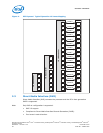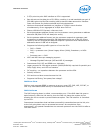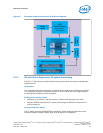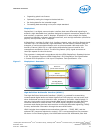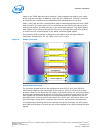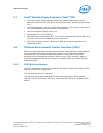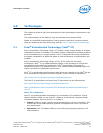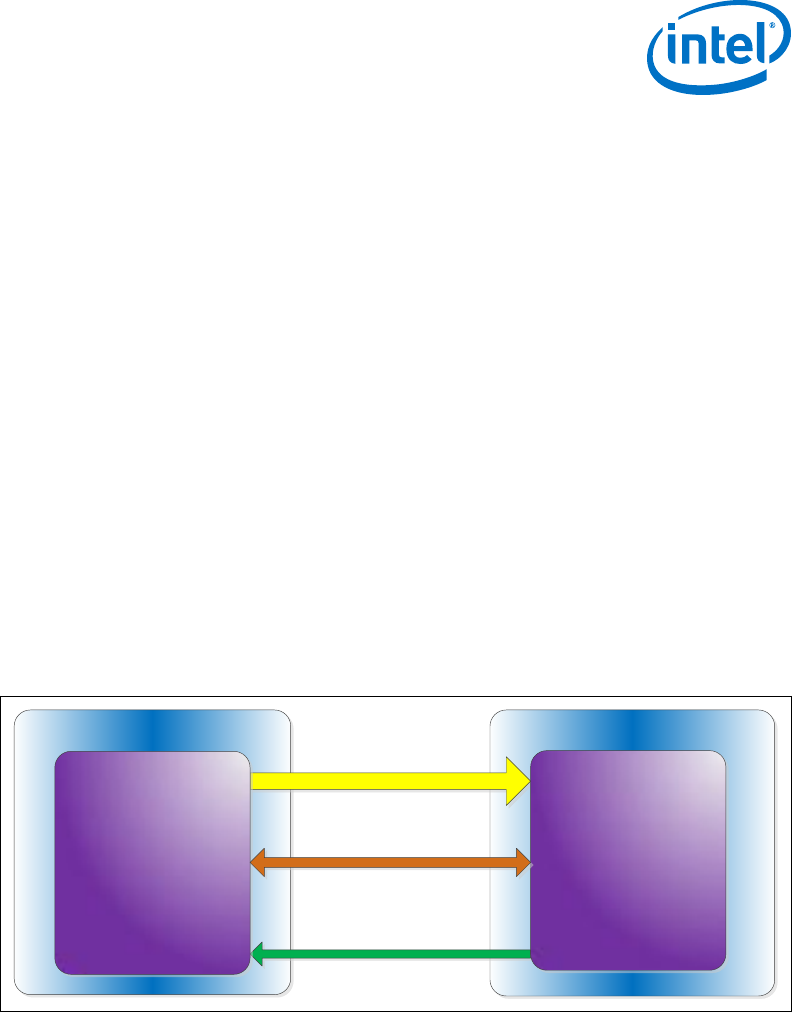
• Organizing pixels into frames
• Optionally scaling the image to the desired size
• Re-timing data for the intended target
• Formatting data according to the port output standard
DisplayPort*
DisplayPort* is a digital communication interface that uses differential signaling to
achieve a high-bandwidth bus interface designed to support connections between PCs
and monitors, projectors, and TV displays. DisplayPort* is also suitable for display
connections between consumer electronics devices, such as high-definition optical disc
players, set top boxes, and TV displays.
A DisplayPort* consists of a Main Link, Auxiliary channel, and a Hot-Plug Detect signal.
The Main Link is a unidirectional, high-bandwidth, and low latency channel used for
transport of isochronous data streams such as uncompressed video and audio. The
Auxiliary Channel (AUX CH) is a half-duplex bidirectional channel used for link
management and device control. The Hot-Plug Detect (HPD) signal serves as an
interrupt request for the sink device.
The processor is designed in accordance with the VESA DisplayPort* Standard Version
1.2a. The processor supports VESA DisplayPort* PHY Compliance Test Specification
1.2a and VESA DisplayPort* Link Layer Compliance Test Specification 1.2a.
Figure 7. DisplayPort* Overview
Source Device Sink Device
Main Link
(Isochronous Streams)
AUX CH
(Link/Device Managemet)
Hot-Plug Detect
(Interrupt Request)
DisplayPort Tx
DisplayPort Rx
High-Definition Multimedia Interface (HDMI*)
The High-Definition Multimedia Interface* (HDMI*) is provided for transmitting
uncompressed digital audio and video signals from DVD players, set-top boxes, and
other audiovisual sources to television sets, projectors, and other video displays. It
can carry high quality multi-channel audio data and all standard and high-definition
consumer electronics video formats. The HDMI display interface connecting the
processor and display devices uses transition minimized differential signaling (TMDS)
to carry audiovisual information through the same HDMI cable.
HDMI includes three separate communications channels — TMDS, DDC, and the
optional CEC (consumer electronics control). CEC is not supported on the processor.
As shown in the following figure, the HDMI cable carries four differential pairs that
Interfaces—Processor
Desktop 4th Generation Intel
®
Core
™
Processor Family, Desktop Intel
®
Pentium
®
Processor Family, and Desktop Intel
®
Celeron
®
Processor Family
December 2013 Datasheet – Volume 1 of 2
Order No.: 328897-004 33




